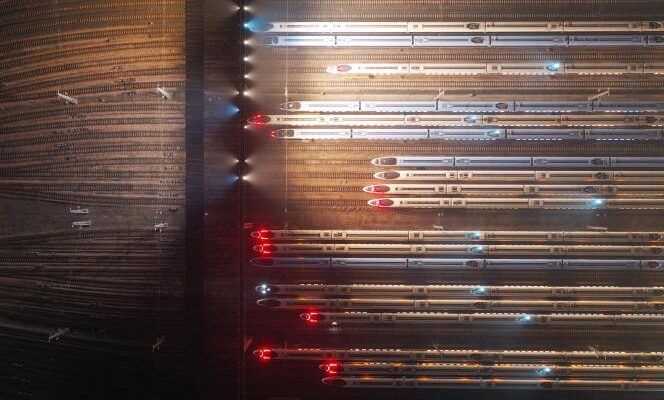Elon Musk is full of praise for China. On the occasion of the centenary of the Communist Party, the boss of Tesla tweeted, on 1er July : “The economic prosperity that China has achieved is truly remarkable, especially in infrastructure. “ Tesla knows something about it: its first Gigafactory outside the United States was built in Shanghai, in 168 working days. Barely ten months between the laying of the first stone and the start of production chains, in October 2019.
An industrial feat, which is not, however, exceptional in China. When a project is identified as a priority for power, everything can go very quickly. From field hospitals built in ten days during the first wave of the Covid-19 epidemic, in early 2020, to the highest TGV line in the world to connect the capital of Tibet to the national rail network, via its 5G coverage, China is proud of its infrastructure projects, which are breaking records.
She even made it her development model. Over the past two decades, they have accompanied, promoted and supported the national “economic miracle”. Since 2010, Beijing has spent the equivalent of 8% of its gross domestic product (GDP) on infrastructure spending. By building highways (10,000 kilometers per year since 2011), railway and metro lines, as well as airports (41 have emerged in the past five years), China has facilitated transport in the country and enabled significant productivity gains. One way to accelerate rampant urbanization, which rose from 36% in 2000 to 64% in 2020.
“It promotes innovation”
At the same time, the activity induced by these constructions has supported economic growth, with work for millions of workers, demand for heavy industries (steel, cement, coal, glass), and more technological ones, like the manufacture of high speed trains. A lever that Beijing has been able to use in periods of slowdown, such as after the financial crisis of 2008.
At the end of 2020, the country had 37,900 kilometers of high-speed lines, half of which had been built in the past five years.
The construction of the high-speed train network is the most striking example. Since the entry into service of the Beijing-Tianjin line in 2008, China has spent an average of 800 billion yuan (111 billion euros) per year on high speed. At the end of 2020, the country had 37,900 kilometers of LGV, half of which had been built in the past five years. They represent two thirds of the global network. In 2021, 3,700 more kilometers were to be inaugurated, that is, in one year, more than the total of French lines in operation (2,800 kilometers). “ The TGV promotes regional economic growth. It improves transport efficiency, saves time, enhances the value of real estate. And this promotes innovation “, enthuses Li Yuanfu, an engineering professor at Southwest Jiaotong University in Chengdu.
You have 51.32% of this article to read. The rest is for subscribers only.
